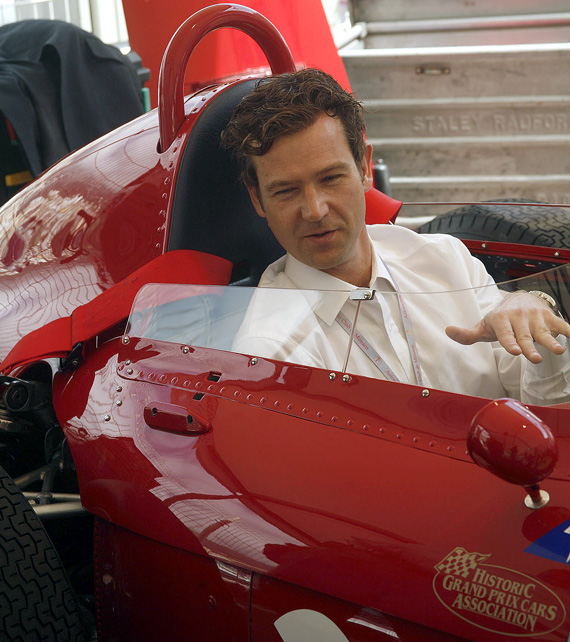
Derek Hill sits in the Ferrari Dino his dad Phil used to win the Italian Grand Prix fifty-four years ago.
Story and Photos by Graham Gauld
You have got to hand it to them; the Monaco Automobile Club put on a real spectacle with their bi-annual Monaco Historic event held last weekend. Monaco has been a gem in on the International racing scene since 1927 when William-Grover Williams, an Englishman in Monaco, won the first Monaco Grand Prix in his Bugatti. This week it was time to forget about the modern computers on wheels that are todays F1 cars and wallow in the nostalgia of racing in the past. The Monaco event always attracts interesting cars and people; let’s meet some of them.
Two years ago at the last Monaco Historic event we had the strange sight of seeing one of the latest Cadillacs being driven with gusto around the famed track. It was all part of a world promotion of their new model and the driver was Derek Hill, the son of America’s first World Champion, Phil Hill. Now, this year, Derek was back but this time gathering material for a movie he is making on his father. How appropriate then that British pop star manager, Tony Smith (Genesis, Phil Collins) was there with his 1960 Ferrari Dino Grand Prix car which gave Phil Hill a win at the Italian Grand Prix that year which also happened to be the last Grand Prix won by a front engine car.
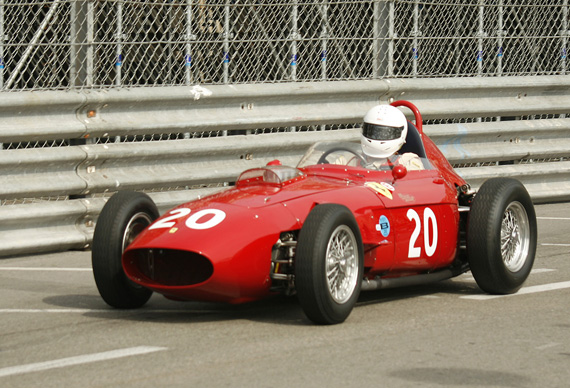
Tony Smith on the warm-up lap in the Phil Hill Italian GP-winning Ferrari Dino, Sadly the brakes seized up on the start line and he was sidelined.
Needless to say Derek climbed in and had a seat and talked with mechanic George Fowles about the car. The Dino had been taken from Monza back to Maranello where the V6 Dino engine was pulled out and a 3 liter 12 cylinder took its place before it was sent to private owner Pat Hoare in New Zealand where it was raced in the free formula Tasman Series. So why was this New Zealander so honored? Well, it was he, who as an officer in the New Zealand army, helped liberate Maranello during the war and he became a close personal friend of Enzo Ferrari.
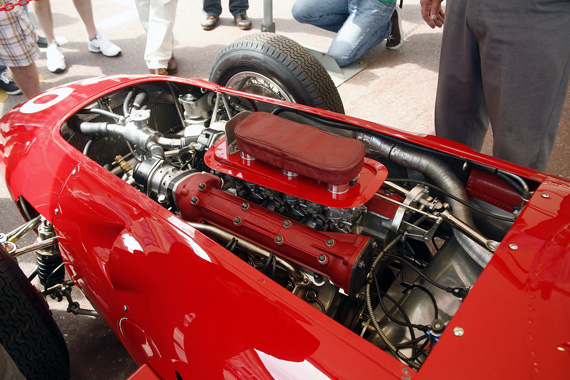
The rebuilt Dino V6 engine. The black plate on the left hand bank of the rear of the block shows where the original magneto should have gone.
However, when the car eventually was sold and came to England it still raced with the V12 engine until Tony Smith tried to enter it for an earlier Monaco Historic meeting and it was refused as it had to be identical to how it had originally raced. George set out to find a V6 Dino engine and eventually was able to build one up to racing spec save for one thing. It did not have the large magneto at the back of the engine and instead had two coils at the front. George mentioned that he could not find the right magneto to fit the car and speaking an aeronautical engineer the engineer said he knew where there were a lot of them. When George asked where they were he said “…at the bottom of the Mediterranean as all the Fiat fighter planes during the war had the same magneto!”
Another interesting sidelight to this Dino is that it officially carries two chassis plates. The one you can see mounted at the front is 0788 the number of the V12 engine put into it by Enzo Ferrari however underneath it is the original chassis plate of the Dino, 007.
The oldest car at the race was Tim Dutton’s Bugatti which was a rare Type 39 that had been a factory car that ran in the Italian Grand Prix in 1925 driven by Meo Constantini.
It was also nice to see one or two interesting Maseratis once more. One of them might have been called the runt of the litter, the Tec Mec that was planned to be the 1959 Maserati Grand Prix car but the plan was shelved only for Valerio Colotti to continue with the car calling it the Tec Mec after his company Tecnica Meccanica. It ran in just on Grand Prix the U.S. Grand Prix in 1959 with Portuguese driver Fritz D’Orey at the wheel but retired with an oil leak.
Both Friz and the Tec-Mec disappeared until Brit Barrie Baxter started racing it in England with success before selling it to Barry Wood in Scotland for his son Tony to race. Prepared in Ian Nuttall’s show in England the car is now flying and Tony put it on pole position for its race, ahead of all the rear-engine Coopers and the like. However Tony was out to lunch at the start and fast New Zealander Roger Wills led off and won leaving the Tec Mec in second; but it was great to see the Tec Mec going so well.
There was another rare and interesting car in the race, one of the few Offenhauser engine cars in Grand Prix racing, the Scarab. When Lance Reventlow – his mother was heiress to Woolworths stores – came into Grand Prix racing with a U.S.-built Grand Prix car he did it in style. He ran a car for Chuck Daigh alongside a spare but there was a third Scarab built as belt and braces and that car never raced, landed in a museum and burly Englishman Julian Bronson found it and is now racing it. Thus it was appropriate that the car be in Monaco as the Scarab made its race debut at the 1960 Monaco GP. Julian had a problem when the cars went out on the grid but eventually got started and thrilled the crowd with some fine opposite lock driving.
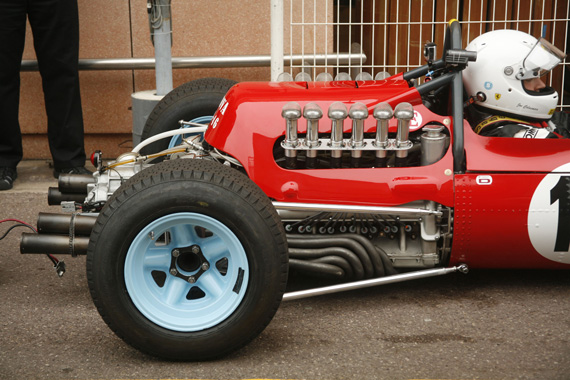
Not a raging succes due to Jim Clark and the Lotus 33, the 512 was nevertheless a significant achievement.
To me, though, the car of the meeting was another rare one, the Ferrari 512 (also called the 1512) Grand Prix car of 1964. That year Mauro Forghieri came up with one of his classic engine designs, a compact 1.5 liter flat 12 cylinder that was put into a Dino style chassis and run by John Surtees and Lorenzo Bandini. The car is a compact jewel and should be shown to all budding race car designers as an object lesson in how to design a small light car with a Grand Prix formula that demanded only 1500ccs engine capacity.
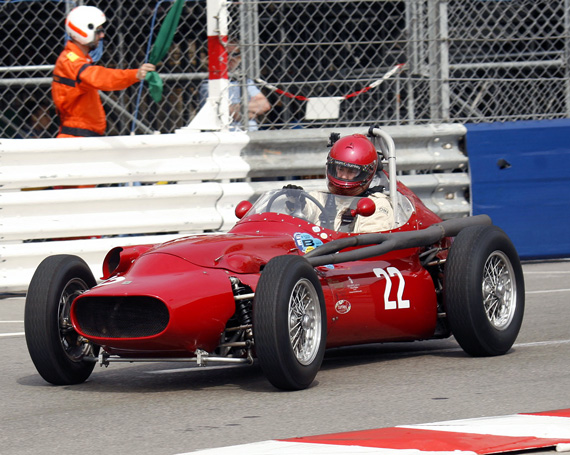
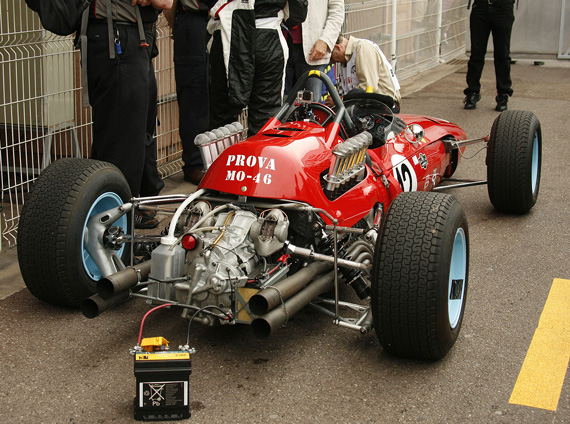
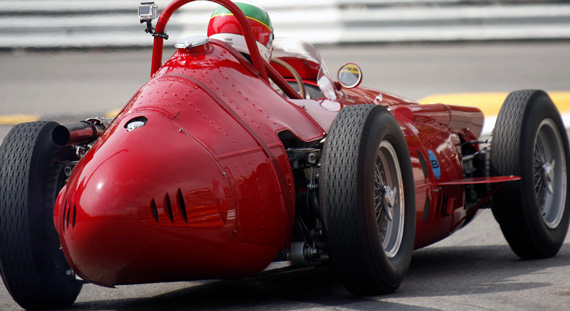
Thanks for the lovely story and photos, and kudos to Graham for his work. With regard to the 1.5 liter flat 12 F1 Ferrari. I am getting on in years but certainly do not recall it ever being called a 512. It was always the 1512. 512’s came a few years later as sports cars and Boxer road cars and their engines were much bigger…5.0 liters.
Regards
Clem.
Clem, thanks for your note. You might check out “The Complete Ferrari” by Eaton, page 267 or conversely, Ferrari by Acerbi page 173. This short-lived Ferrari was known by both 512 and 1512, but no one has figured out why it was referred to as a 512; while 1512 makes sense, 1500 cc, 12 cylinders, 512 does not, aside from the fact that Ferrari was used to using a three digit designation at the time (preceded by the 158 and proceeded by the 312). Perhaps someone can help clear this up?
The Editor